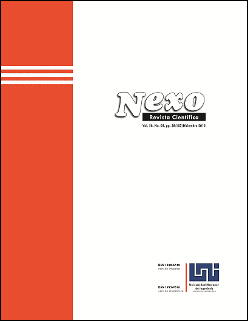DETERMINATION OF SUITABLE THIN-LAYER DRYING MODELS FOR BREWER’S YEAST (Saccharomyces cerevisiae)
DOI:
https://doi.org/10.5377/nexo.v28i2.3421Keywords:
Brewer’s yeast, Thin-layer drying, Drying modelling, Multiple regressionsAbstract
Mathematical models of thin-layer drying for brewer’s yeast (Saccharomyces cerevisiae) were studied and verified with experimental data. Twelve (12) different mathematical drying models were compared according to three (3) statistical parameters, i.e., correlation coefficient, root mean square error and chi (χ²)-square. The thin-layer drying kinetics of brewer’s yeast was experimentally investigated in a laboratory tunnel dryer and the mathematical modelling, using thin-layer drying models present in the literature, was performed. Experiments were performed at air temperature of 40, 50 and 60 ºC at an airflow rate of 1.2 m/s. Drying curves obtained from the experimental data were fitted to the thin layer drying models. The results show that the Page model is the most appropriate model for predicting the drying behaviour of the thin-layer brewer’s yeast.
Downloads
2330
Downloads
Published
How to Cite
Issue
Section
License
The authors who publish in Nexo Scientific Journal agree to the following terms:
- Authors retain the copyright and grant the journal the right of the first publication under the license Creative Commons Attribution License, which allows others to share the work with a recognition of the authorship of the work and the initial publication in Nexo Scientific Journal.
- Authors may separately establish additional agreements for the non-exclusive distribution of the version of the work published in the journal (for example, in an institutional repository or a book), with the recognition of the initial publication in Nexo Scientific Journal.
- Authors are allowed and encouraged to disseminate their works electronically (for example, in institutional repositories or in their own website) before and during the submission process, as it can lead to productive exchanges, as well as earlier and greater citation of published works.










